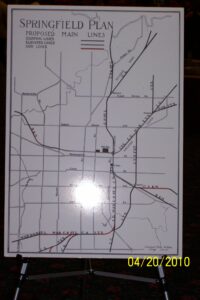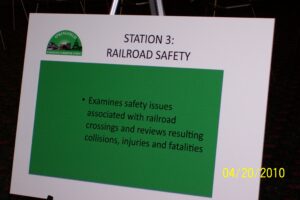George Bush and his deregulationistas turned green into a bad name. From their expansion of organic products from 120 to well over 1,000 to their attempt to promote something mythologically called clean coal, the Bush administration was hell bent on destroying the environment. Tragically he may be remembered as the man who set aside more ocean square miles as a wild life sanctuary than any other president…but that is another story…
here is a great site for it:
http://www.sourcewatch.org/index.php?title=Greenwashing
|
|
SourceWatch needs your financial support to survive and thrive. If you’ve found this information on the people, organizations, and issues shaping the public agenda helpful, please make a tax-deductible donation now. |
Greenwashing
From SourceWatch
Greenwashing is the unjustified appropriation of environmental virtue by a company, an industry, a government, a politician or even a non-government organization to create a pro-environmental image, sell a product or a policy, or to try and rehabilitate their standing with the public and decision makers after being embroiled in controversy.
The U.S.-based watchdog group CorpWatch defines greenwash as “the phenomena of socially and environmentally destructive corporations, attempting to preserve and expand their markets or power by posing as friends of the environment.” This definition was shaped by by the group’s focus on corporate behavior and the rise of corporate green advertising at the time. However, governments, political candidates, trade associations and non-government organizations have also been accused of greenwashing. [1]
The 10th edition of the Concise Oxford English Dictionary defined greenwash as “disinformation disseminated by an organization so as to present an environmentally responsible public image. Derivatives greenwashing (n). Origin from green on the pattern of whitewash.” [1]
In 2008 the environmental group Greenpeace launched a website Stop Greenwash to “confront deceptive greenwashing campaigns, engage companies in debate, and give consumers and activists and lawmakers the information and tools they need to … hold corporations accountable for the impacts their core business decisions and investments are having on our planet.” [2]
The allure of greenwashing
:}
Of course Green Peace has to have their say:
http://stopgreenwash.org/
What’s this all about?
Every day, Americans are bombarded with advertising about environmentally friendly goods and services. But how many really are green, and how many are just pretending?
dddot dddot dddot
About Shell Oil they say:
At a time when the fate of this federally protected area is so vulnerable and at risk of being altered forever by oil, Greenpeace felt it necessary to shed light on the ironic fact that Shell has used the place to brand its own image as green and actually caring about the environment.
The oil company ran a full-page print advertisement in National Geographic Magazine and several other publications, which featured a color picture of a diver swimming through deep blue water featuring brightly colored fish and coral. The statement in the middle of the ad says: “What do we really need in today’s energy hungry world? More gardeners.”
More gardeners? If that’s really what we needed, we could just stop drilling for oil all together right? All we need is more gardeners.
But Shell doesn’t really mean that at all.
They know that in today’s energy hungry world, oil is the food and the company’s main priority. Even through the thickest green glasses, few are going to dispute that fact.
The rest of the text on the advertisement reads that a Shell employee and marine biologist has been working with the company to protect the area.
But how much could the oil giant really be protecting when the company also actually drills near the vulnerable sanctuary.
The advertisement and words on the page are clearly for show.
Shell does have close ties to the Flower Gardens. In fact, an executive from Shell Canada, Rebecca Nadel serves on the sanctuary’s advisory council. Also on the team for the sanctuary is James Sinclair of the now notorious Minerals Management Service. At first glance, it doesn’t exactly look like those employed to protect the sanctuary are representing the most responsible organizations.
Shell has a cozy bed in sanctuary bureaucracy.
The company however, does donate money to Flower Gardens. The Green Life reports $5,000 of direct funding each year. However, the site also acknowledges that it costs nearly six figures to run one advertisement in National Geographic. For a drop in the bucket, the oil giant rebrands its image as being concerned with the underwater sanctuary.
:}
More tomorrow
:}.






























